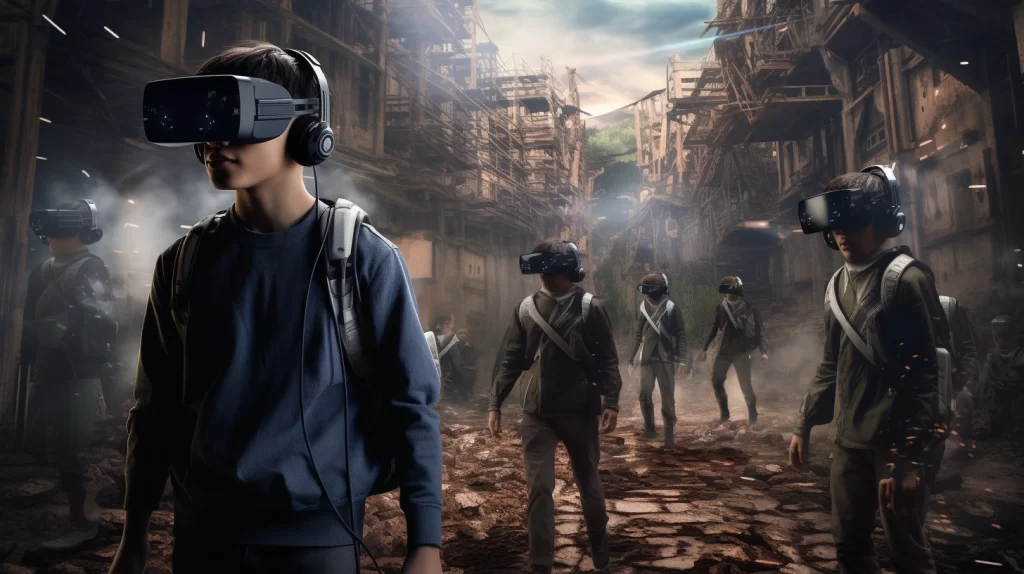Ever thought of teaching AI without fancy gadgets? Let’s uncover the low-tech path to high-tech smarts!

When I first started exploring the world of AI, I figured you needed all the latest tech to get anywhere. But what if I told you that you could teach the basics of artificial intelligence with little more than a chalkboard and a dash of creativity?
It’s like being a magician, pulling rabbits out of hats when everyone was expecting doves!
Now, why bother with AI, especially if your classroom tech doesn’t go beyond a CD player? Because AI isn’t just about the gadgets; it’s a way of thinking, and it’s everywhere, like the air we breathe.
It’s the secret ingredient in the technology sauce, and getting to grips with it is as crucial as learning your ABCs – it’s the language of the future, folks.
The beauty of AI is that it’s a chameleon. It adapts, it changes, and it fits into every nook and cranny of learning, even in a low-tech setting.
The benefits are sweeter than a surprise snow day: critical thinking skills get sharper than a new set of crayons, problem-solving becomes as intuitive as playing hopscotch, and understanding AI means our kids are ready to dance at the future’s party.
So, how do we make this AI fairy tale come true without a magic wand (or a robust Wi-Fi connection)?
We improvise, adapt, and overcome! Start with the basics – algorithms can be explained with a recipe for mud pies, and you can teach binary code using nothing more than a series of light switches.
Use storytelling to bring AI concepts to life; have your students craft tales where they’re the heroes solving problems with their AI sidekicks.
It’s like having a classroom pet, but instead of a hamster, it’s a friendly robot that lives in their imagination.
Sure, there are bumps on the low-tech road. Sometimes, it feels like trying to fly a kite on a windless day. But who hasn’t faced a challenge without a silver lining?
Every time a video refuses to play, that’s an opportunity to flex those storytelling muscles. When a tablet won’t start, it’s a chance to go back to pen and paper and draw out our ideas.
Measuring success might seem trickier than solving a Rubik’s Cube blindfolded, but it’s not all about the flashy tech.
It’s in the ‘aha’ moments that pop up like daisies after a spring rain, in the solutions sketched on scratch paper, and in the lively debates that echo during lunchtime.
There are success stories galore! I’ve seen teachers turn their low-tech classrooms into AI think tanks, using nothing but board games and role-play to explore complex concepts.
Their secret? A little bit of ingenuity and a lot of belief in the power of old-school teaching tools.
The future, as I see it, is not about the gadgets we have; it’s about the ideas we nurture. It’s about ensuring that every student can chat about AI over a peanut butter and jelly sandwich with as much ease as their favorite cartoon.
We need to teach AI not as a high-tech subject but as a new way of looking at the world.
Now, you may be scratching your head, wondering, “How do I start?” Picture this: a toolbox filled with all the old-school goodies – dice, cards, stories, and play-acting scripts.
These are your keys to the AI kingdom. The community is buzzing with fellow educators sharing low-tech strategies like prized recipes at a potluck. The support you need is out there, just a library visit or a phone call away.
So, my dear educators, let’s get our hands dirty in the best possible way.
Let’s show the world that you don’t need to be plugged in to be switched on. AI education isn’t about the shiniest computers; it’s about the spark of curiosity that shines in every student’s eyes.
And remember, the journey from a simple abacus to AI doesn’t need a tech express; sometimes, the scenic route is the most rewarding one.
Wrapping Up
To wrap this up, teaching AI in a low-tech classroom is not only possible, but it’s also incredibly rewarding.
It’s about being resourceful, thinking outside the box, and remembering that at the heart of AI is the very human ability to dream, wonder, and imagine.
So let’s take pride in our low-tech classrooms and use them as launchpads for high-tech thinking.
Let’s teach AI with a touch of old-school flair, proving that innovation isn’t about what you have; it’s about what you do with what you’ve got. Here’s to the amazing journey of teaching AI with a little less tech and a lot more imagination!

Leave a Reply
You must be logged in to post a comment.